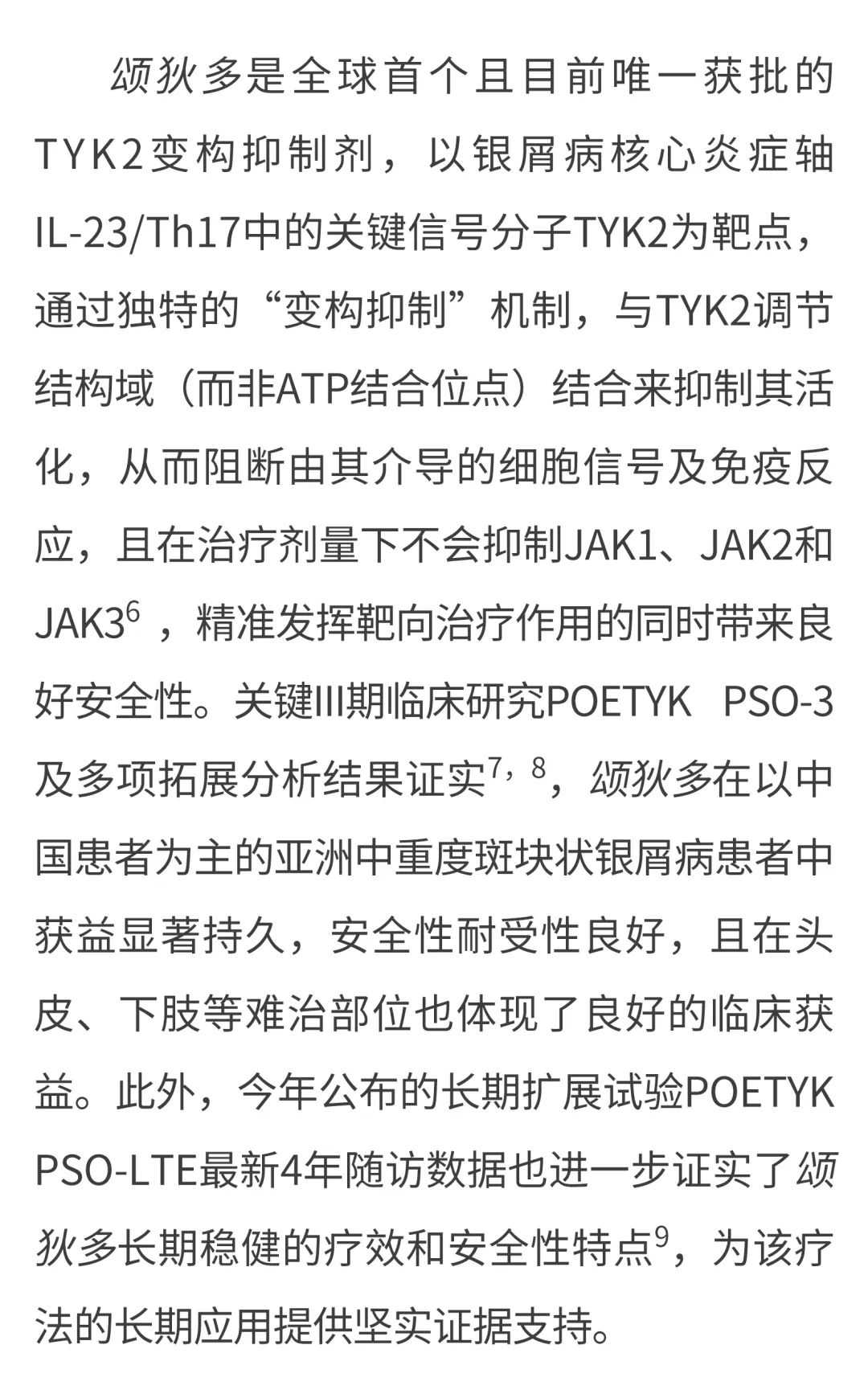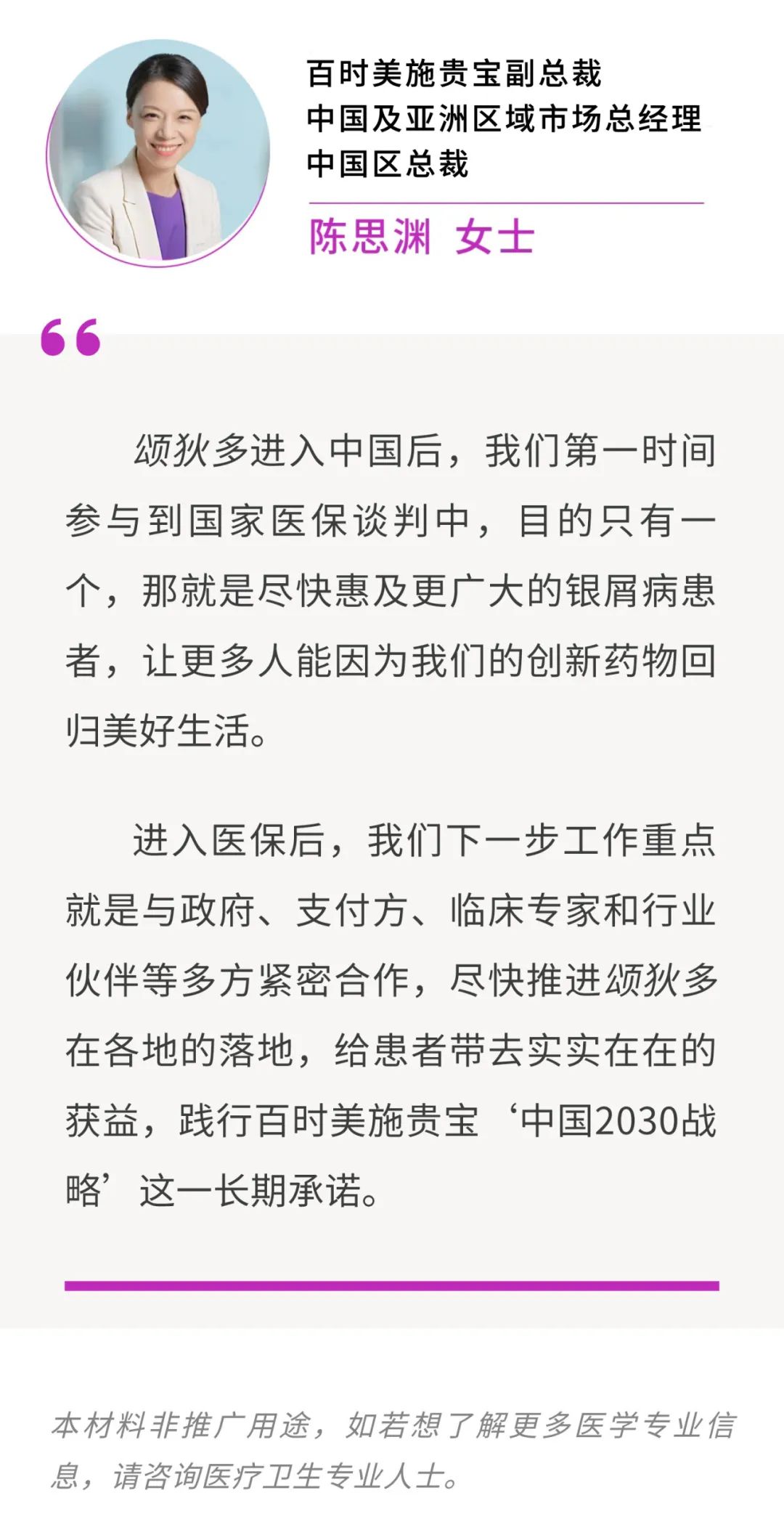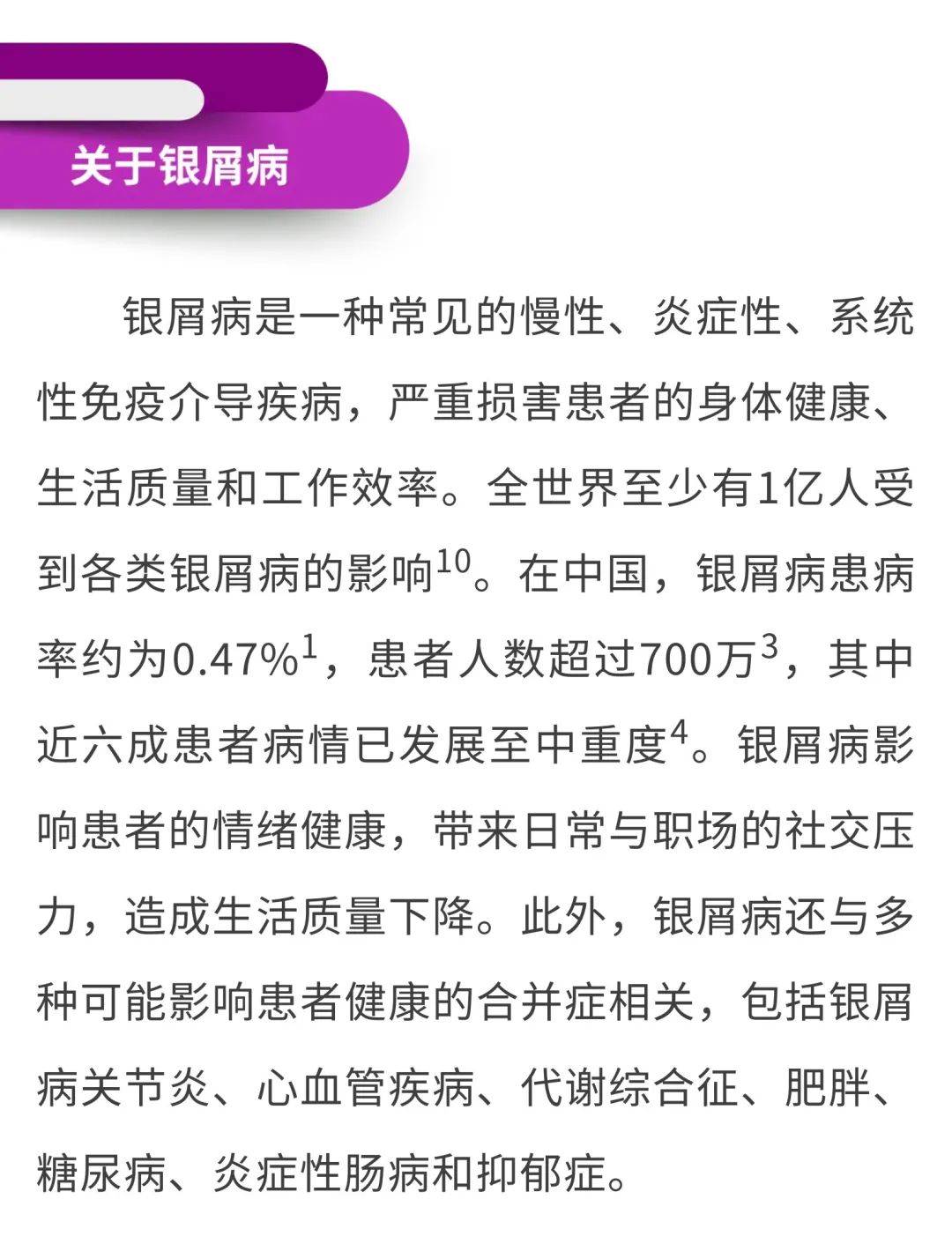






参考文献:
1.中华医学会皮肤性病学分会银屑病专业委员会. 中国银屑病诊疗指南(2023完整版). 中华皮肤科杂志,2023,56(7):573-625
2.黄丹,陈崑.银屑病相关流行病学调查进展[J].诊断学理论与实践,2021,20(01):48-52.
3.银屑病基层诊疗指南(2022年),中华全科医师杂志 2022 年8 月第 21 卷第 8 期, 705:714
4.Chen, K., Wang, G., Jin, H., Xu, J., Zhu, X., Zheng, M., & Gu, H. (2017). Clinic characteristics of psoriasis in China: a nationwide survey in over 12000 patients. Oncotarget, 8(28), 46381–46389.
5.SHI Yuling, CHEN Wenjuan. Psoriasis comorbidity: prevalence, diagnosis and treatment[J]. Journal of Diagnostics Concepts & Practice, 2023, 22(03): 221-229.
6.Chimalakonda, A., et al., Selectivity Profile of the Tyrosine Kinase 2 Inhibitor Deucravacitinib Compared with Janus Kinase 1/2/3 Inhibitors. Dermatol Ther (Heidelb), 2021
7.Zhang, JZ et al. Deucravacitinib, an Oral, Selective Tyrosine Kinase 2 Inhibitor, in Asian Patients With Moderate to Severe Plaque Psoriasis: Findings From the Phase 3 POETYK PSO-3 Trial. Abstract N. 3448, EDAV 31st Congress 2022.
8.Zhang JZ, et al. Deucravacitinib, an oral, selective, allosteric tyrosine kinase 2 inhibitor, in Asian patients with plaque psoriasis: efficacy in PASI body regions and component scores in the phase 3 POETYK PSO-3 trial. ADC 2024 Poster.
9.Diamant Thaçi et al. Deucravacitinib efficacy in Psoriasis Area and Severity Index (PASI) target outcomes through 4 years in the phase 3 POETYK trials in moderate to severe plaque psoriasis. EADV 2024 poster.





































 浙公网安备33011002015279
浙公网安备33011002015279 本网站未发布麻醉药品、精神药品、医疗用毒性药品、放射性药品、戒毒药品和医疗机构制剂的产品信息
本网站未发布麻醉药品、精神药品、医疗用毒性药品、放射性药品、戒毒药品和医疗机构制剂的产品信息
收藏
登录后参与评论